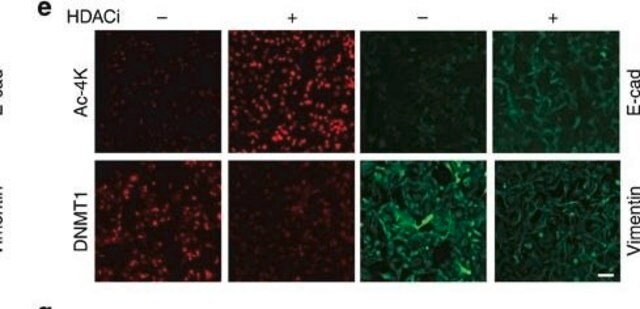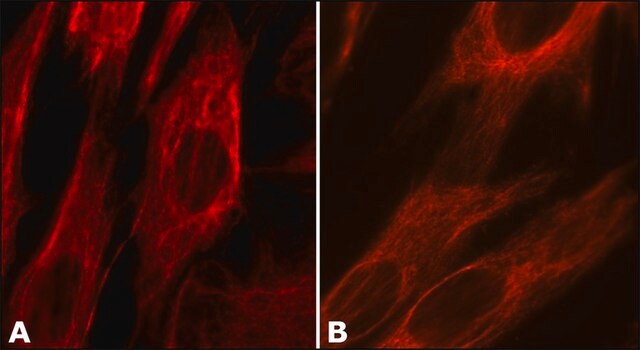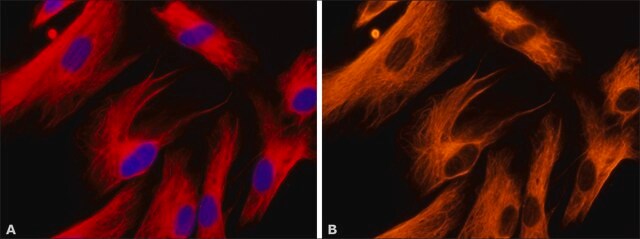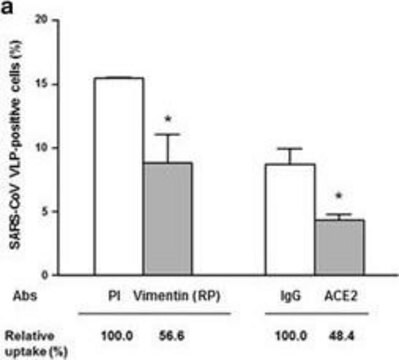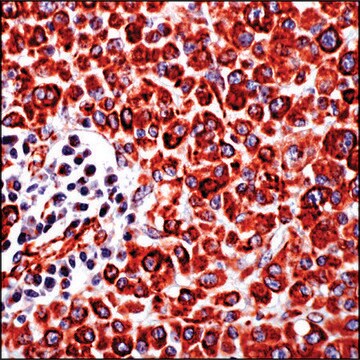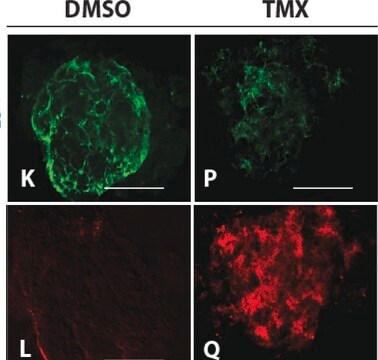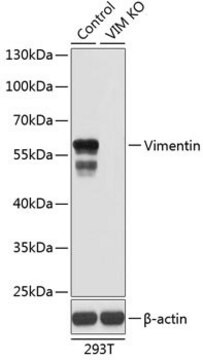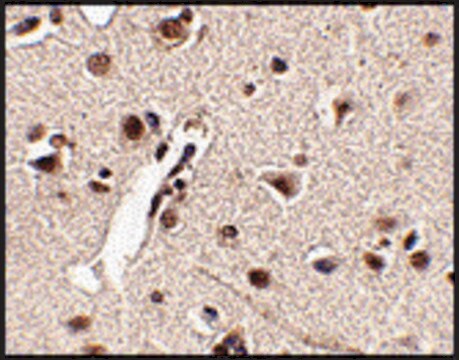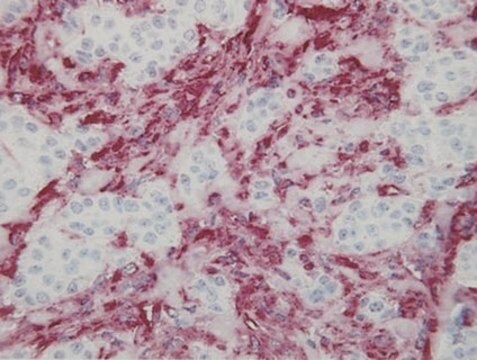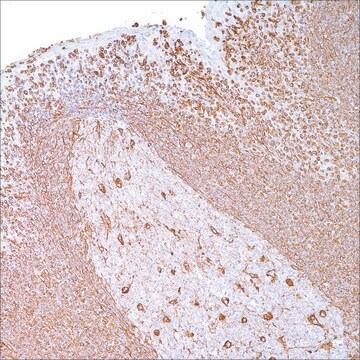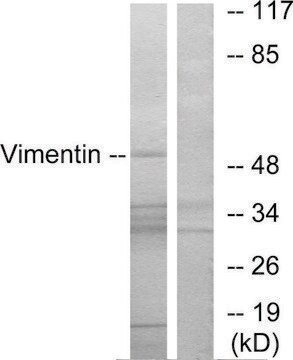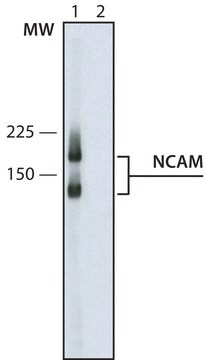V2258
Anti-Vimentin Antibody
mouse monoclonal, LN-6
Synonyme(s) :
Anti-F5H288
About This Item
Produits recommandés
Nom du produit
Monoclonal Anti-Vimentin antibody produced in mouse, clone LN-6, ascites fluid
Source biologique
mouse
Niveau de qualité
Conjugué
unconjugated
Forme d'anticorps
ascites fluid
Type de produit anticorps
primary antibodies
Clone
LN-6, monoclonal
Contient
15 mM sodium azide
Espèces réactives
pig, mouse, sheep, human, bovine, rabbit, feline, rat
Technique(s)
immunohistochemistry (formalin-fixed, paraffin-embedded sections): 1:200 using human tissue sections
immunoprecipitation (IP): suitable
indirect immunofluorescence: suitable using cultured cells
western blot: suitable
Isotype
IgM
Numéro d'accès UniProt
Conditions d'expédition
dry ice
Température de stockage
−20°C
Modification post-traductionnelle de la cible
unmodified
Informations sur le gène
human ... VIM(7431)
mouse ... Vim(22352)
rat ... Vim(81818)
Description générale
Spécificité
Immunogène
Application
Actions biochimiques/physiologiques
Clause de non-responsabilité
Vous ne trouvez pas le bon produit ?
Essayez notre Outil de sélection de produits.
En option
Code de la classe de stockage
12 - Non Combustible Liquids
Classe de danger pour l'eau (WGK)
nwg
Point d'éclair (°F)
Not applicable
Point d'éclair (°C)
Not applicable
Faites votre choix parmi les versions les plus récentes :
Déjà en possession de ce produit ?
Retrouvez la documentation relative aux produits que vous avez récemment achetés dans la Bibliothèque de documents.
Les clients ont également consulté
Articles
In the midst of beeping lab timers, presentations and grant deadlines, it is easy to take for granted the quality of lab reagents.
Alzheimer's disease (AD) is the most common cause of dementia in the elderly and is characterized by gradual loss of cognitive functions.
Notre équipe de scientifiques dispose d'une expérience dans tous les secteurs de la recherche, notamment en sciences de la vie, science des matériaux, synthèse chimique, chromatographie, analyse et dans de nombreux autres domaines..
Contacter notre Service technique